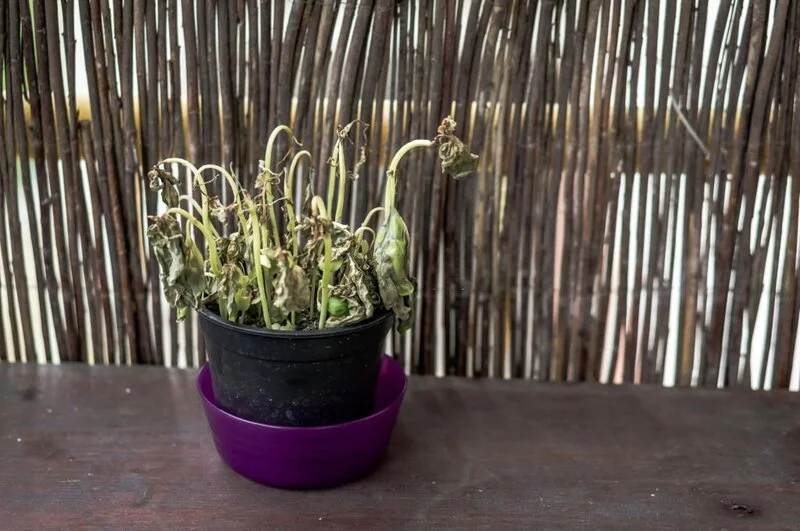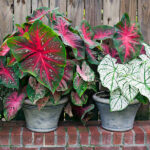Basil, with its fresh aroma and savory flavor, is a star in kitchens around the world. From a humble pot on a windowsill to a dedicated patch in your garden, growing basil at home can be a delightful experience. However, it can be disheartening to see the lush green leaves of this culinary favorite turning brown. But don’t worry, this is a common issue many gardeners face. By understanding the causes and learning how to address them, you can restore your basil plant’s health and continue enjoying its flavorful contributions to your dishes.
- Package contains 50 organic herb fertilizer spikes and are produced to avoid wasteful runoff, mess, hazards and smells
- Formulated with a 4-3-3 NPK to ensure a continuous supply of nutrients below the surface, where the plants active roots are growing
- Jobe’s organic fertilizer spikes contain no synthetic chemicals and are OMRI listed for organic gardening by the USDA
- Application is simple and should be done at the time of planting or early in the growing season
- Jobe’s fertilizer spikes are pre-measured to provide the right amount of nutrients for herbs without risk of over fertilizing
The Healthy Basil Plant: Identifying Normal Characteristics
A healthy basil plant is a sight to behold. With vibrant green leaves that are full and smooth, and stems that are strong and upright, basil plants are a testament to the lively energy of nature. A healthy plant has a fresh, robust scent that intensifies when you brush against the leaves or stems.
Basil plants typically grow to a height of 12 to 24 inches, depending on the variety and growing conditions. They love the sun and require 6 to 8 hours of sunlight each day. The soil should be moist but well-drained, as waterlogged roots can lead to problems.
It’s also normal for some lower leaves to turn yellow and fall off as the plant ages – this is a part of the plant’s natural life cycle. However, if your basil’s leaves are turning brown, there might be a different issue at play. Let’s take a closer look at why your basil might be showing these signs.
- Annual herb Should be planted in full sun in light, well-drained soil.
- Plant super sweet Genovese 18 inches apart after the risk of frost has passed.
- When planting, dig a hold large enough to accommodate the entire root ball and cover with nutrient-rich soil.
- Keep Basil plants moist throughout the growing season. Mulch around plants to remain soil moisture.
- Harvest in 60 to 90 days.
Why Basil Leaves Turn Brown
When those once vibrant green leaves start turning brown, it’s a signal that your basil plant isn’t as happy as it could be. Here’s what could be happening:
- Watering Problems: Basil loves moist but well-drained soil. If you’re giving it too much water (overwatering), the roots might get soggy, causing the leaves to turn brown. If you’re not giving it enough (underwatering), your basil may become stressed and its leaves may turn brown.
- Sunburn: Yes, plants can get sunburned too! If your basil plant is receiving too much direct sunlight, especially during the hottest part of the day, its leaves can get scorched, causing them to turn brown.
- Nutrient Deficiencies: Basil, like all plants, needs certain nutrients to grow. If it’s not getting enough of these nutrients, its leaves can start turning brown.
- Disease or Pests: Certain diseases or pests can cause basil leaves to turn brown. For example, basil can get a disease called fusarium wilt that causes brown spots and wilting. Pests like aphids can also cause problems.
How to Treat Browning Basil Leaves
If your basil’s leaves are turning brown, don’t worry. With some care and attention, your plant can bounce back:
- Adjust Watering: If you suspect overwatering or underwatering, adjust your watering schedule. Allow the top inch of soil to dry out between waterings, but don’t let the plant wilt.
- Modify Sunlight Exposure: If sunburn might be the cause, try moving your basil plant to a location where it will still receive plenty of light, but not as much direct, intense sun.
- Nutrient Boost: If a nutrient deficiency is suspected, consider adding a balanced, slow-release fertilizer to your basil plant’s soil.
- Address Disease or Pests: If you notice signs of disease or pests, such as spots, wilting, or visible bugs, you may need to use an organic or chemical pest control solution. In some cases, it might be best to remove and destroy severely affected plants to prevent the issue from spreading.
Remember, every plant is unique and might need different care. Paying attention to your basil plant’s needs will help you figure out the best way to care for it.
- 3 Cups / 1 quart of Tulsi Plant / Holy Basil Plant Potting Soil Mix. Soil is packed in a resealable clear poly zip bag. Soil can be stored in the bag as long as its kept dry.
- Custom hand blended soil prepared in Maryland, USA from Baby Violets.
- Can be used for Tulsi/ Holi Basil/Curry Leaf or Jasmine plants.
- 1 quart / 3 cup bag – can fill 15 (2″ pots) or 9 (3″ pots) or 4 (4″ pots). Please note, this is an estimate and the amount may vary slightly, based upon plant stem size and root size.
- Soil contains 50% peat moss & 50% perlite. There are no extra additives to this potting mix and no fertilizers. The perlite (super coarse), provides extra drainage and is chemically inert and sterile. This is a lightweight, airy soil mix. Not dense, compressed or compacted.
Preventive Measures and Ongoing Care for Basil Plants
Prevention is always better than cure, and it’s no different when it comes to caring for basil plants. By providing proper care and creating a healthy growing environment, you can keep many potential issues at bay.
- Regular Watering: Basil prefers consistently moist soil. Regular watering, without making the soil waterlogged, will help your basil plant stay hydrated and healthy.
- Adequate Sunlight: Provide your basil with plenty of sunlight, but remember to protect it from the scorching midday sun, especially in hotter climates.
- Nutrient-Rich Soil: Make sure your basil is planted in rich, well-drained soil. Add compost or a balanced, slow-release fertilizer to provide necessary nutrients.
- Monitor for Pests and Disease: Regularly inspect your basil plant for signs of pests or diseases. If you catch a problem early, it’s easier to treat and causes less stress to your plant.
Conclusion
While it can be disheartening to see your basil plant’s leaves turning brown, remember that plants, like us, face challenges. The key is to understand the causes, provide the right care, and take preventive measures to ensure that your basil remains healthy and vibrant. So, continue to nurture your basil with love, patience, and the right knowledge, and soon you’ll be rewarded with lush, green, aromatic leaves that are ready to add that special touch to your next home-cooked meal!






